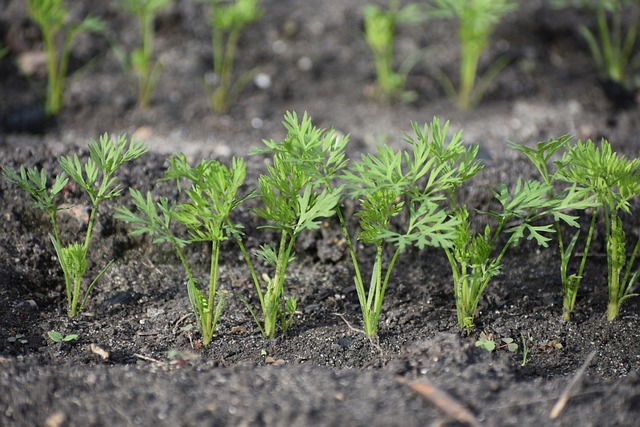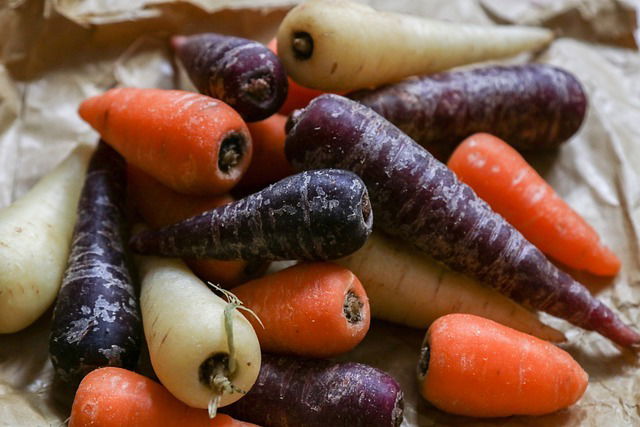Homegrown Harvest: How to Grow Your Carrots

By [Shahzad Ali Minhas]
Why Grow Carrots?
Carrots are one of those staples found in almost any given kitchen. They're valued for their sweet flavor and crunchiness as well as their versatility in preparation with virtually any method. Whether it's chopped carrots in a salad recipe, or soup, or eaten raw with perhaps a little crunch under a cold-running stream after a quick rinse off the dirt, there's something so blissfully therapeutic about pulling that homegrown carrot out of the garden and taking that first crunch.

Why grow your carrots?
For one, it couldn't possibly be that a carrot pulled fresh from earth could taste like a bunch purchased at the grocery. Carrots allowed to ripen in the owner's soil seem sweeter and almost more aromatic just because they've had time and condition to realize themselves fully. They can also be grown in small gardens, raised beds, or even pots if you have little or no space. Growing Carrots This is the complete, step-by-step guide to everything you'll need to know for growing carrots-from the right variety to a successful harvest.
Choosing the Best Variety
World of Carrots The world of carrots is far more varietal than you might think. Of course, the orange carrot-the most obvious and the most common purchase in the grocery store is also available to the home grower, but it's great fun to experiment in colors ranging from purple, red, yellow, and even white. Such heirloom varieties can add dramatic color appeal both to your garden and to your plate.
 As you begin choosing which variety you are going to grow keep in mind the following
As you begin choosing which variety you are going to grow keep in mind the following
Climates
There are various types of carrots that prefer a cooler climate and vice versa. For instance, some of the most flexible varieties include 'Nantes' which can grow quite well with any climatic condition, and 'Danvers' which is a hardy one.
Space
These are some of the varieties that can be grown in small and deep spaces. Some of the best varieties that do well in small spaces are Chant nay and Paris Market since they do not require deep soil for full growth.
Soil preparation
This is a root crop; its success depends to a large degree on the quality of your soil. The goal of working soil for carrots is to build soft, loose, well-draining soil. Carrots grown in dense or rocky soils tend to be oddball shapes, which, while a nice treat sometimes, aren't always the most practical-looking carrots in the kitchen.
Here's how you prepare your soil
Dig to at least 12 inches (30 cm) deep. Clear any big rocks or other debris. A reasonably flat and even path will encourage carrots to grow straight down. Some organic matter, such as compost or well-rotted manure. Avoid fresh manure as it will lead to forking in the carrots. Carrots prefer slightly sandy soil and a pH of 6.0-6.8.If your natural soil is heavy clay or mottled with stones, you should grow your carrots on raised beds. It will also give you much greater control over the texture of the soil.

Carrots are a cool-season crop, and that makes them perfect to grow either in spring or in the fall. Sow the seeds 2-3 weeks before the average date when your area is expecting the last frost of spring or in late summer for the fall crop.
Carrots direct seed when the weather is cool. They don't transplant well.
Rows for raised beds and containers should be in the center 12 inches.
This very small carrot seed is rather a nuisance in the neck to find when sown (7-21 days). Mix with a bit of sand and this will get that down into the soil so that you can place it properly as you sow it.
Pro tip: Carrot seeds like moisture. Water the soil regularly as they're germinating, but not enough to waterlog it.
Growing Your Germinating Carrots
Once your carrots begin sprouting, the good times roll. They are a low-maintenance 324 crop, but some things come into play.
Thin them up
Once the seedlings are about an inch or two tall, thin them up. Otherwise, it may crowd if not enough space is left between the plants. Carrots grown crowded come out to be in odd shapes and stunted in size. Try spacing them 2-4 inches apart.
Weed constantly
Carrots do not take well to competition. Hand-weed around them so you're not giving them any competitions.
Water evenly
The carrots have to be watered evenly and one inch of water per week. If the roots are not given that uniform watering, then most probably they are going to be smashed. Hence always take care to maintain the moisture level throughout the growing season.
Pests and Troubleshooting

Carrot Rust Fly
These pesky insects lay their eggs at the base of the carrot plant. The larvae tunnel down into the roots. Prevent these pests with floating row covers.
Root-Knot Nematodes. A microscopic worm that induces galls on roots. Rotate crops each year as often as possible to reduce your chances of getting nematode infections.
Forked or Misshapen Roots
Often the result of soil compaction or fresh manure. Use loose, free-draining soil and aged compost.
How to Have Fun
For most varieties, carrots are ready to harvest in about 60-80 days. Test by gently tugging on one with your hand it's pulled up easily, the rest of the others should be pulled up as well. Carrots can stay in the ground even after they are mature, and a light frost will make them sweeter.
If you live in a cooler area, mulch the tops of your carrots during the last fall stewarding to extend the harvest season, keeping the ground warm.

Storage
Pull off the leafy tops as soon as the carrots are brought in; this should prevent a loss of root moisture. Carrots should be kept for a few weeks in the refrigerator or frozen, or stored in the coolest, driest cellar you can find, packed in damp sand or sawdust. Then you'll have fresh carrots into the darkest days of winter.